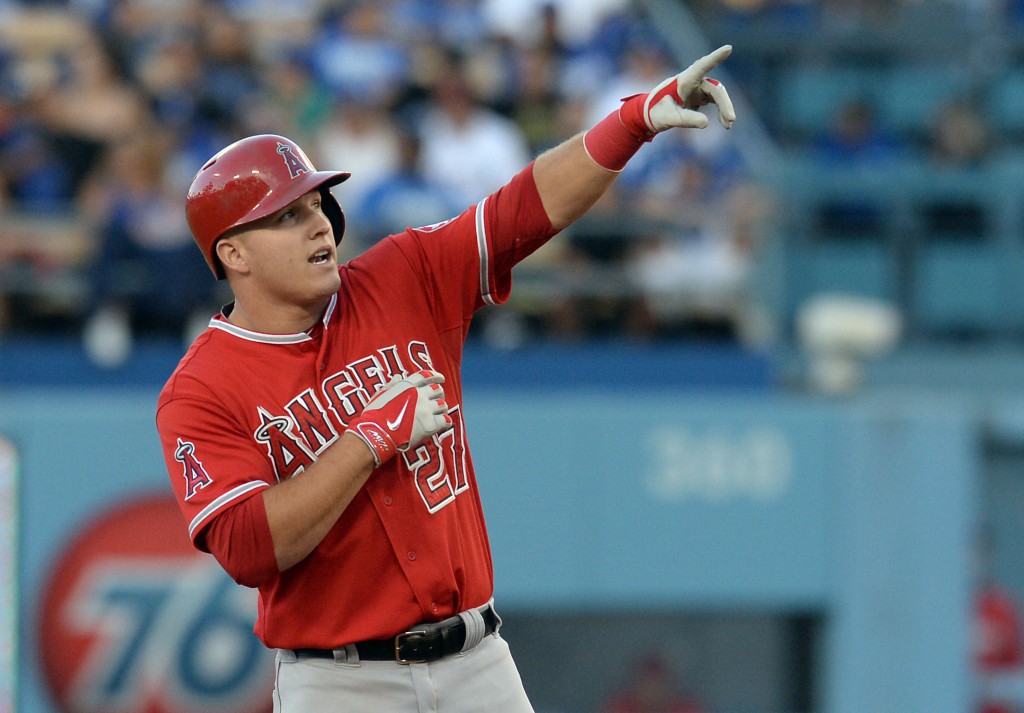Mike Trout – it’s a name that baseball historians are destined to echo for a very long time. He’s already accomplished so much that I can only shake my head when I’m reminded that he’s 23 years old. To put it simply, there is no one else like him.
Our job at Fantasy Labs is to figure out exactly how to turn these real-world accolades into our DFS prosperity. So I took a shot at creating a profile that captures the Angels larger-than-life superstar.

Without proper context, it’s hard to appreciate these numbers – like the fact that over the last calendar year, Trout is top-4 in weighted on-base (4th), isolated power (2nd), and slugging percentage (1st). It’s even harder to comprehend when we start speaking in terms of Fantasy Labs metrics that are brand new to all of us.
For that reason, I created a table using Trout’s unprecedented stats as the baseline:

I should start by sharing that it’s nearly impossible to match him at the 10 PPG mark since Trout and Paul Goldschmidt are the only two batters averaging double digits. Only when we dip back into single digits do some of the game’s top DFS players begin to join the picture.
The standard for each category is set by three of baseball’s elite players – Michael Brantley (52% consistency), Todd Frazier (24% upside) and Matt Carpenter (21% dud). Trout will cost around $600 more than the average salary of these aforementioned all-stars, and as we know, a higher price tag brings upon higher expectations.
For more on those expectations, let’s have a look at Trout’s salary and performance breakdown:

Trout’s average DraftKings salary is $5,600, which is justifiably highest in the league. According to the chart, he can most routinely be bought for $5,300-$5,900 and can usually be counted on to exceed his salary expectations. It may be wise to fade Trout once he crosses over the $5,900 mark, as his numbers start to fall below those high anticipated totals after adjusting for that high salary.

The chart above is what truly separates Trout into a league of his own in terms of daily fantasy potential. Conventional wisdom says that a viable DFS option needs to either steal a bag or hit a homer with regularity. Trout does both with a combination of speed and power that is unrivaled in today’s game.

We will finish off with a helpful look into situations where Trout will most often thrive. Angel Stadium is a notorious hitter’s park so it’s hardly a surprise to see these home/road splits. A tad more improbable is Trout’s preference of same-handed pitching. There is a definite misconception about his lefty/righty splits, but a look at his career numbers confirms his superior performance vs right-handed pitchers.

Finally, amidst a small sample size, Trout seems to favor the confines of division rivals Texas and Oakland. Trout hits to all fields with power, which makes him a universal threat but we’ll take a look at his batted ball profile and his most frequently visited ballparks. We see a majority of Trout’s homers exit to left/left-center, but ironically he struggles at LF-friendly Minute Maid Park (.186 AVG with 3 HR in 70 ABs). The indoor facility in Houston may factor into his struggles, as Trout hits just .226 in domes compared to .308 outdoors.


